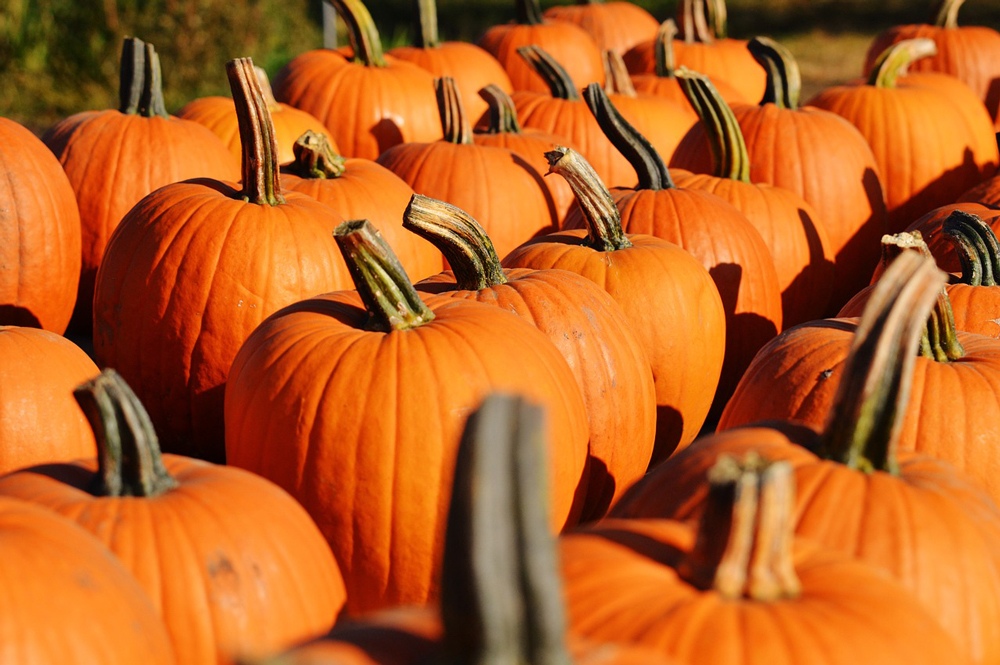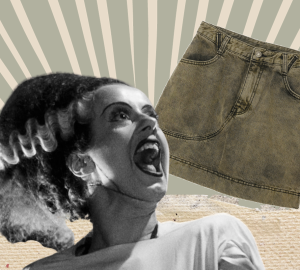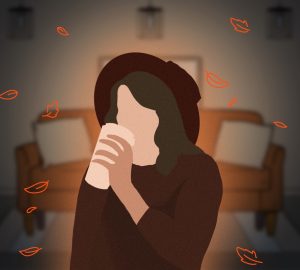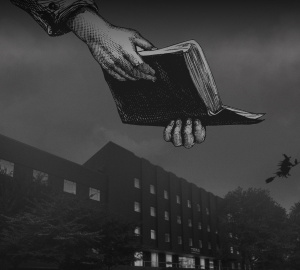
by Jarrod Fouts
It’s that time of year again where different TV stations start putting somewhat scary halloween movies on TV, you have a perfectly valid reason to wear your very tight fitting Flash costume in public and around other non-SCAD people, and some will try not to puke when they see one of those Reese’s Halloween commercials because they already ate like a thousand and it’s starting to weigh on their stomach like a tractor trailer would on a shoelace.
It’s also the time of year where different religious groups will rally and decry the night as the devil’s holiday and parents will be scanning scores of Snickers and Sweet-Tarts for already torn wrappers. While there will be pamphlets out about the sinister — even Satanic — nature of things as innocent to us as Jack-O-Lanterns, there will also be people telling their kids horror stories about razor blades hidden in apples by psychos sick enough to tamper with treats. It’s easy to shrug off what these people say about Halloween as just silly superstition, and it’s just as easy to pass off what our parents probably said to us as another little urban legend.
But all legends have some truth. Halloween, like most of our other highly commercialized and heavily Americanized holidays, is another in the long list of stolen holy days we’ve adopted for good times and good sales. About 2000 years ago, Celts celebrated a festival on October 31st known as Samhain, the day before their New Year. On Samhain, it was believed that the dead wandered around as ghosts and the boundary that separates our world and the spirit world was blurred. The spirits were believed to be capable of causing chaos, and also seen as way for the Druids to be able to predict the future.
To celebrate this quasi-zombie-ghost apocalypse, the Druids built huge bonfires, where people gathered to burn crops and sacrifice animals to the various Celtic gods. The Celts also wore costumes typically consisting of animal heads and skins to scare off or confuse the spirits, which makes me want to argue that the only costume that makes any sense at all to wear on Halloween is one from “Ghostbusters”, but I digress. Around 43 A.D. the Roman Empire conquered and settled a majority of territory held by the Celts, and their traditions got mixed up over time. Samhain got two extra days tacked onto it for the celebration of two Roman gods, the second of which honored Pomona, the Roman goddess of fruit and trees, whose symbol is the apple.
This is where bobbing for apples could have come from. The actual name, Halloween, comes from the Catholic feast of All Martyrs Day established by Pope Boniface IV, and Pope Gregory III later extended the feast to not only be a celebration of the Christian martyrs but also a celebration of the saints, which became All Souls’ Day. In 1000 A.D., Instead of dressing in animal skins, people dressed as angels and devils. It was similar to Samhain, giant bonfires included, but with a distinctly Christian bent. The night before was changed to All Hallows Eve, which later became Halloween. Celebration of Halloween was a very small and limited affair in America until the 19th century, when a flood of new immigrants, namely the Irish fleeing the disaster of the 1846 potato famine, helped to make Halloween a national celebration.
Taking from the original Irish and English traditions of going door to door and offering prayers in exchange for food, Americans created the trick-or-treat practice that is so popular today. The holiday, from here, lost most of its pagan traditions of focusing on the dead and witchcraft and became a day of festivities aimed at the young. In part, the rampant vandalism that plagued the early days of Halloween in America helped to create a panic of poisoned candy and pins and needles hidden in other treats.
Tales of wicked souls gleefully handing out spiked candy to unsuspecting, costumed children are rampant, but have no backing and feel like more attempts to police the second most beloved holiday of the year. The only verifiable reports are isolated incidents according to Snopes.com, internet mythbusting superheroes, and don’t constitute reasons for a mass panic over candy or sweeping paranoia. The most well known case, and probably the catalyst for this poisoning paranoia was a 1974 case where eight-year-old Timothy O’Bryan died after eating a cyanide laced Pixy-Stix.
It was later discovered that the boy’s father was the poisoner, not some deranged homeowner. What about razor blades and other sharp objects? Okay, you have slight reason to be concerned here, according to the mythbusters and urban legend obliterators at Snopes. Since 1959, there have been around 80 reports of sharp objects found in food, most of them hoaxes and the other majority being terribly thought out pranks by friends. If you get handed an apple or other treat by a friend with a sick sense of humor biting their bottom lip trying not to laugh and it has a small slit, about an inch and a half wide on it somewhere, refuse it.
Now that you know the origins of Halloween, go and inadvertently appease various gods by participating in watered down traditions with weird costumes and don’t get poisoned or mouth stabbed by a friend you really should have gotten rid of a long time ago.























